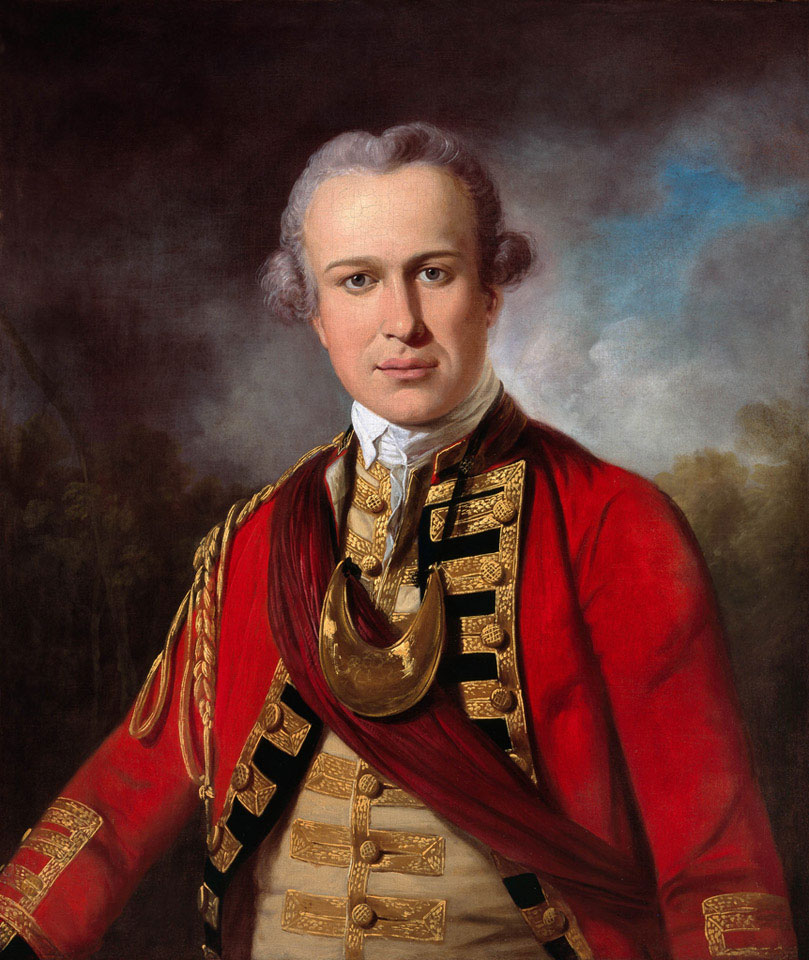
Online Collection
« Prev - 1 of 1 results - Next »
Unidentified Officer of a Royal Regiment of Foot, 1760 (c)
Oil on canvas by Tilly Kettle (1735-1786), 1760 (c).
The dark blue facings or collar and cuffs of this unknown sitter's uniform indicate that he served with a 'Royal' Regiment of Foot, one that is authorised to bear the words 'Queen's', 'King's' or 'Royal' in its title. The gorget and crimson sash distinguish him as an officer, while the manner in which the sash is worn across the chest rather than round the waist, together with the absence of epaulettes, suggest that the uniform pre-dates the Royal Clothing Warrant of 1768.
Born in London in 1735, Tilly Kettle specialised in portraits in the style of Sir Joshua Reynolds. However, from 1762 intense competition from other artists prompted him to leave the capital for the Midlands. Returning to London two years later, he exhibited at the Free Society and the Society of Artists, but attracted only minor commissions. Consequently, in 1768, he petitioned the East India Company for permission to work in India.
Kettle's arrival in Madras in 1769 is particularly significant in the history of British art in India. He was the first British portraitist of any note to work in India, where he made a successful career painting prominent Europeans such as Warren Hastings, Governor-General of Fort William, as well as Indian royalty like the Nawabs of Arcot and Oudh. The artist built up a considerable fortune before returning to England in 1776. However, Kettle's work in India had done nothing to raise his standing at home. Determined to revive his career, he set off back to India in 1786 but died en route.
NAM Accession Number
NAM. 1971-12-50-1
Copyright/Ownership
National Army Museum, Out of Copyright
Location
National Army Museum, Study Collection
Object URL
https://collection.nam.ac.uk/detail.php?acc=1971-12-50-1

